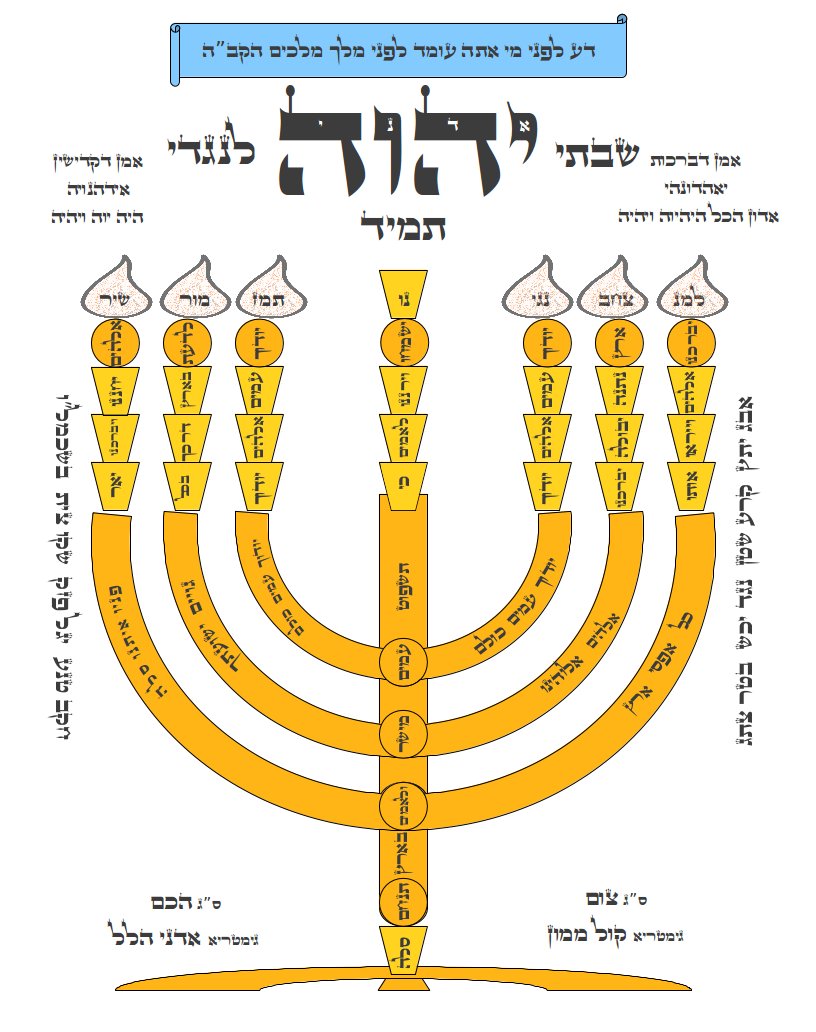Thoughts, Opinions, Music Notes & A Little Nonsense From Marc O'Hara
Sunday, August 28, 2005
Seven Branched Menorah
My wife Linny questioned the Krauthammer article in regards to the seven branched Menorah. She had never heard of such a thing. The Menorah that we usually think of is the one with nine branches.
The original Menorah was the golden candelabra that G-d commanded the Jewish People to make and place in the Holy Temple. It had six branches and a stem, making seven lamps in all. The kohanim (priests) lit it once a day. The Torah relates its measurements and design in Exodus 25:31-40.
The Sages teach that the Menorah was the vessel that G-d used to blend the spiritual light of the World to Come with the physical light of this world. For this reason, the windows in the Temple were narrow on the inside and wide on the outside - to spread out this blended light to the world.
There is a prohibition against making a metal seven-branched menorah. This prohibition is part of the general prohibition against making vessels like those of the Holy Temple, and it was never rescinded.
Chanuka was instituted as an annual holiday the very first year after the Maccabean victory (165 BCE) to celebrate the victory and the miracle of the oil that burned for eight days.
The Chanuka menorah has place for eight candles and for a ninth candle set off somewhat from the rest. The eight candles commemorate the miracle of the oil while the ninth candle, the shamash, is for light. The first use of an eight-armed menorah for Chanuka is not known, although there are some dating back over 500 years. Menorah to celebrate the Maccabean victory has Nine branches too recall the nights that the oil continued to burn.
What follows is some information regarding restrictions from the Talmud for reproducing the Seven branched Menorah:
The Talmud forbids manufacturing a seven-branched candelabrum, in keeping with the Biblical prohibition of "imitating" any of the vessels (keilim) that were used in the Mishkan (Tabernacle - literally "Dwelling".)
There are three views in the early commentaries in regard to the extent of the prohibition. Some hold that only an exact replica is prohibited. Any slight change from the original in the Mishkan is permitted. Others hold that any menorah which would have been considered kosher b'dieved, is prohibited. Other poskim are even more stringent. They hold that any seven-branched menorah, made out of any metal, regardless of its shape or form, is prohibited.
The Shulchan Aruch rules [in the opinion of the Shach] in accordance with the second view, i.e., that even a menorah that is not made exactly like the one in the Mishkan but would be kosher b'dieved is prohibited. He rules, therefore, that if the menorah is not made from gold but from other types of metals; if the replica is made without the decorative cups, knobs, or flowers that were part of the original menorah; if the menorah is shorter than the 18 tefachim (4.5-6 feet) that the original menorah measured, it is still prohibited to replicate.
There are, however, some poskim who follow the third approach, that a menorah which would not have been considered kosher even b'dieved is still prohibited. In their opinion, it is forbidden to make any menorah, no matter what its shape or form, if it has seven branches. Even a menorah which is made to hold candles and not oil would be prohibited according to this strict interpretation of the halachah. A menorah which is round or square would also be prohibited. There is a debate among latter-day poskim as to whether the halachah should follow the [Shach's interpretation of the] Shulchan Aruch's lenient ruling or the stricter ruling of other poskim.
The poskim are also undecided about whether the prohibition applies only to the manufacture of such a menorah, or also to keeping it in one's possession. The poskim are also in doubt concerning the status of an eight-branched menorah of which one branch broke off (11).
Since this prohibition is of Biblical origin, we must, wherever possible, be stringent when in doubt.
Therefore:
Any menorah with six, eight, or nine branches may be made and kept in one's possession.
It is prohibited to make a seven-branched menorah out of any metal whatsoever.
A seven-branched menorah made out of wood or porcelain is permitted.
A round, triangular or square menorah with seven branches is also included in this prohibition.
Many poskim permit a seven-branched electric menorah, while others forbid.
Ideally, it is best to refrain from making one. If one happens to have such a menorah, many poskim allow one to retain it.
Notes:
Shach Aruch refers to a famous Rabbi and teacher of Torah, Rabbi Shabse HaCohen whose name is generally referred as the acyronym "Shach."
Poskim is the plural of Posek which translates "legal decisor" or a Spiritual leader of a Jewish congregation; qualified to expound and apply Jewish law. A rabbi who decides the facts about Halakha in cases of law where previous authorities are inconclusive. This decision is known as a psak din or psak halakha a ruling of law or simply a "psak". In Hebrew, פסק is the root implying to stop or cease - here the posek brings the process of legal debate to finality. Piskei Din are generally recorded in the literature.
B'dieved comes from a Hebrew word for permitted. Generally in the sense that it is questionably permitted. It literally means "hiddeness or concealment".
Subscribe to:
Post Comments (Atom)

No comments:
Post a Comment